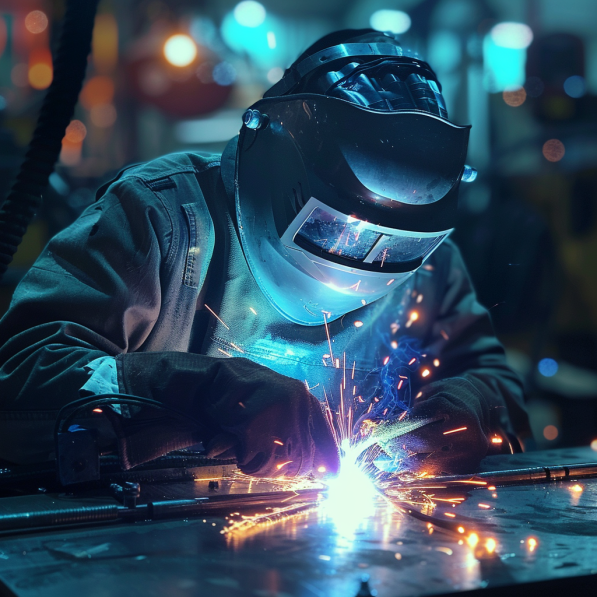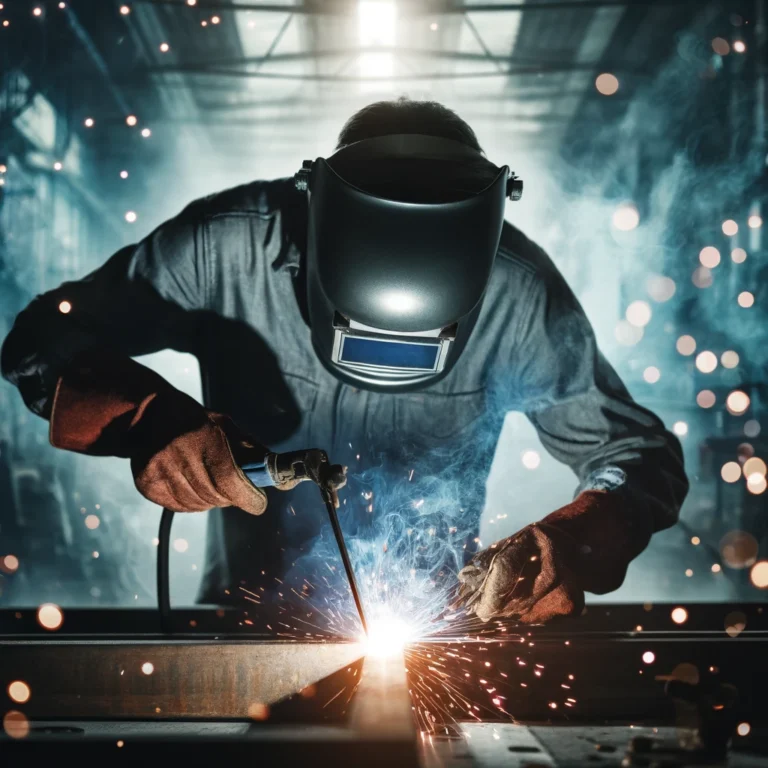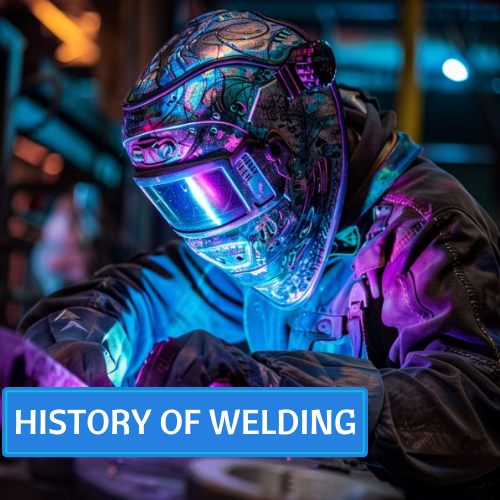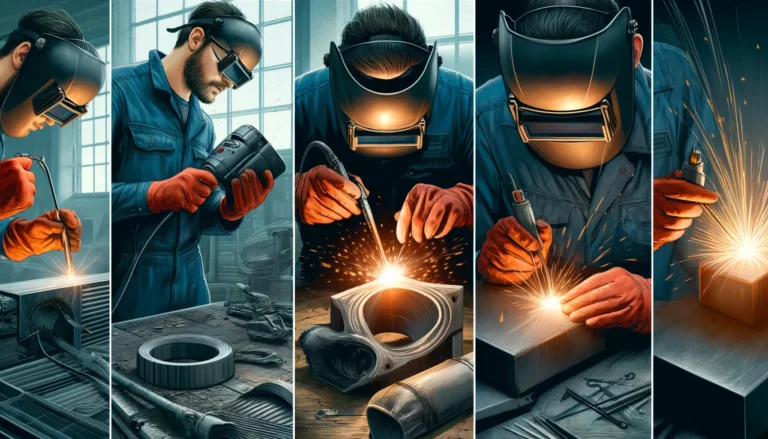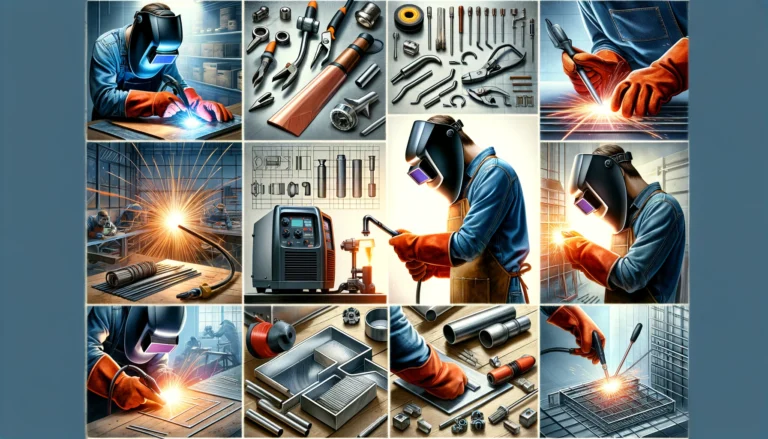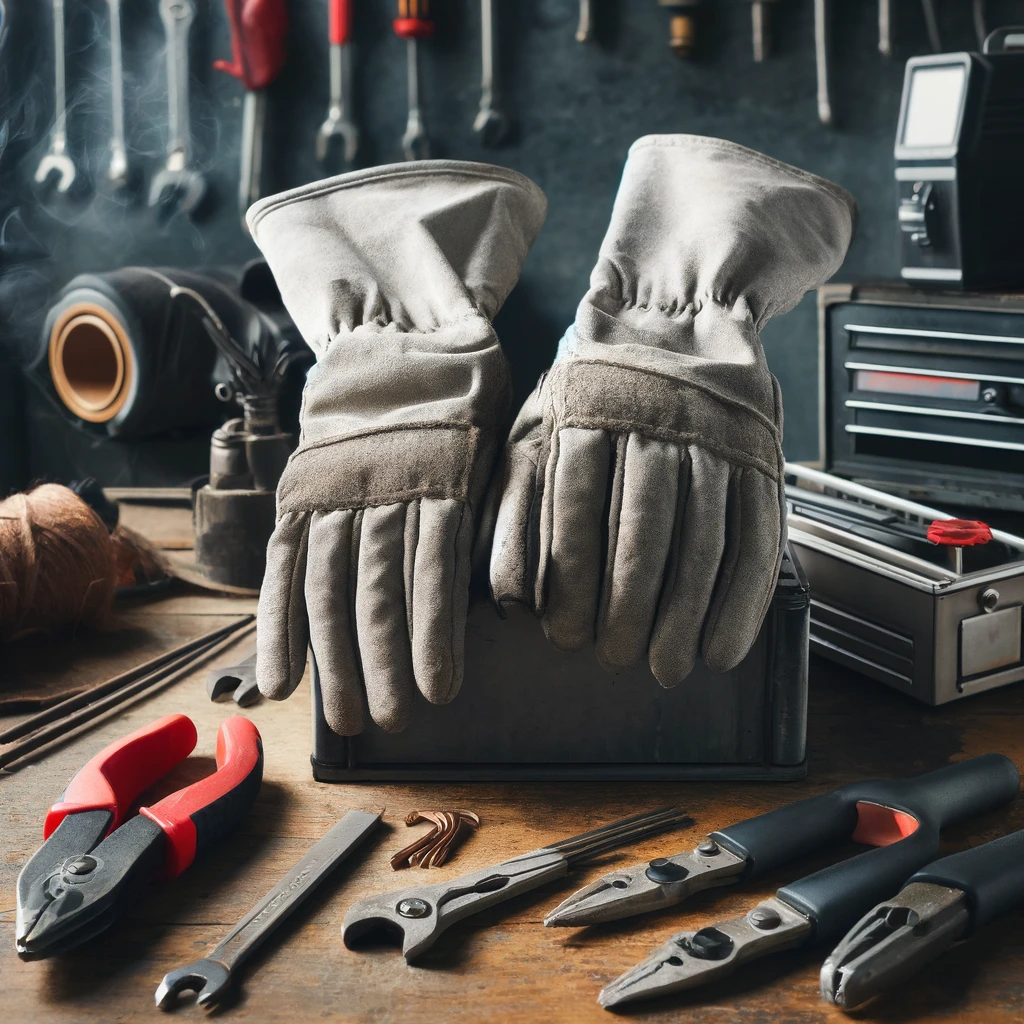
What are Welding Tips & Essential Safety Gear
When you think about welding, you have to remember, it isn’t just case of sticking 2 bits of metal together, welding is a craft, and some say even an art!
To be at the top of your game, it is also imperative to make sure safety is always at the core of everything!
So lets proceed by going some strongly advised safety tips and when using essential welding gear. 🙂
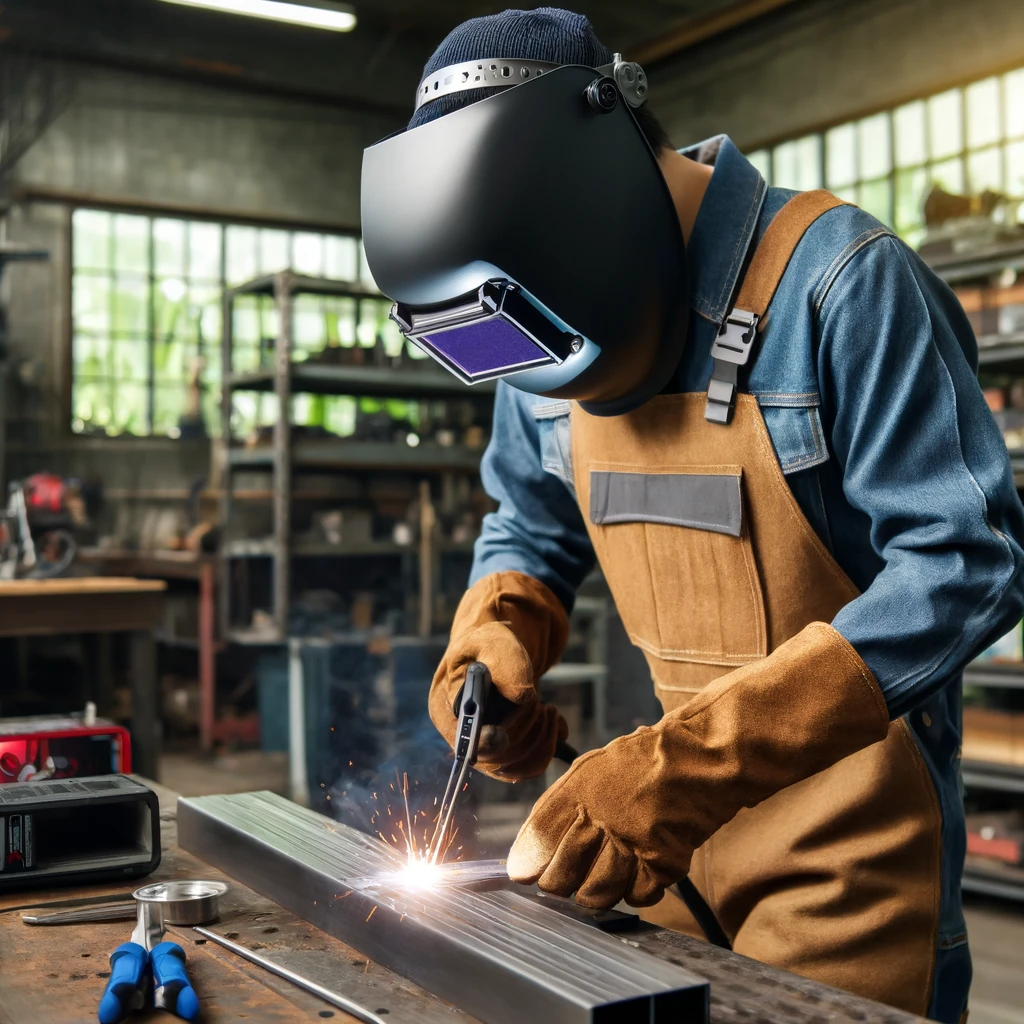
What are the Welding Hazards
As a welder, it is wise to learn and understand the hazards of welding as soon as possible.
As you can expect burns are the most common, and they can happen in a split second, so concentration is vital when in action.
The intense UV radiation from the welding arc can cause “welder’s flash,” which is a very painful condition that feels like sand in your eyes, making a wedding mask absolutely essential!
Then you have the inhalation of fumes from the gases produced during welding, worse case scenario this can lead to serious respiratory, especially if you are a regular welder over time.
Additojally, there’s also the risk of electric shock, fires, and explosions, especially if you’re not careful with your equipment and surroundings.
Im not telling you this for purposes of scaremongering, intact on the contrary, I want people to get back into welding, as for years these types of skills have been diminishing.
What I want to do, however, is to make you aware of these risks, and if you are sensible about things then there’s no reason you can avoid anything like this happening to you 🙂
Essential welding Safety Gear
Helmet and Eye Protection
When you think of a welder, the first image that springs to mind is a man in a tinted mask.
A welding helmet is your first line of defense against the intense light and radiation produced by the welding arc, which we have just covered above known as welders flash.
Auto-darkening helmets are a game-changer. They adjust the lens shade in milliseconds, providing continuous eye protection without lifting the helmet
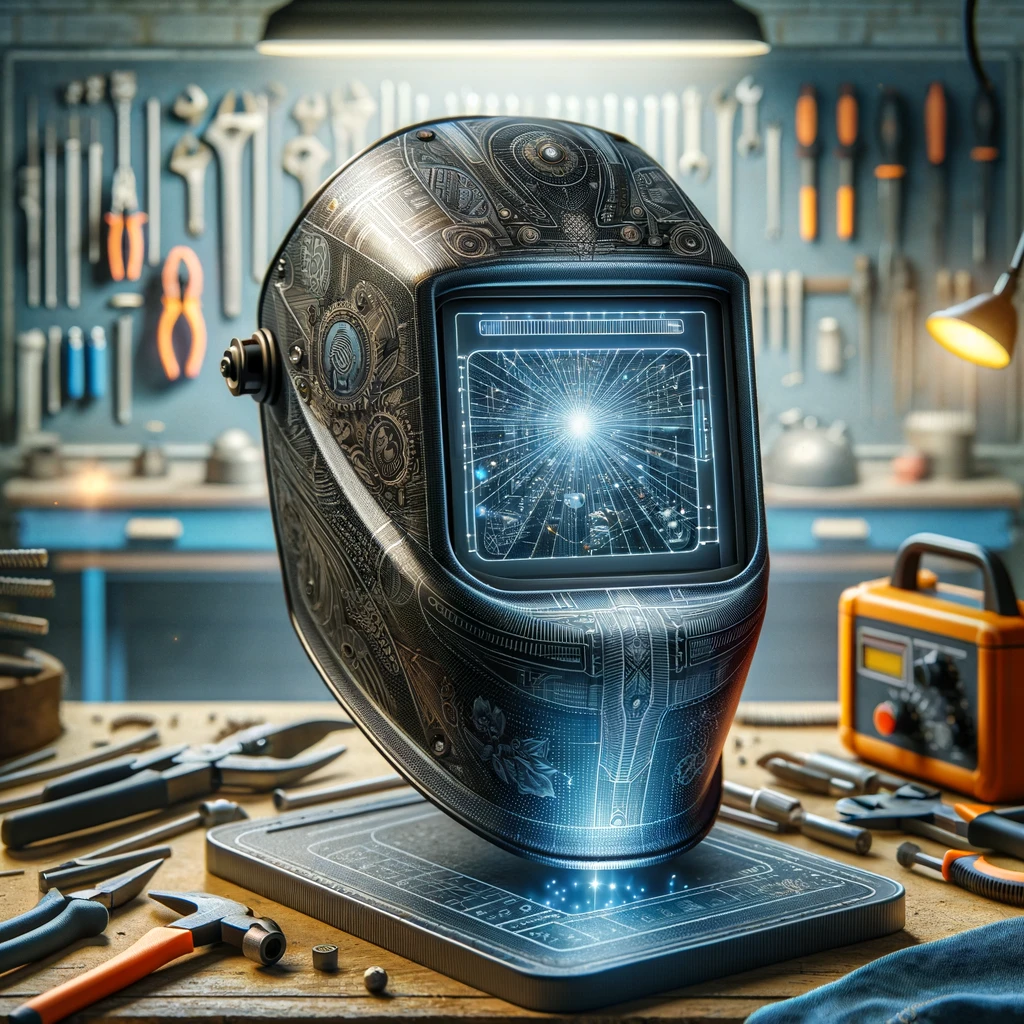
.
There is also Passive helmets which can also be effective but do require manual adjustment.
What ever option you choose, always ensure your helmet meets the necessary safety standards for UV and IR protection to prevent eye injuries and long-term damage. your eyes are arguably the most important thing you can possess, so look after them, only a fool wouldn’t!
Protective Clothing
Never underestimate the importance of wearing the right protective clothing,especially when it comes to welding!
Its essential you choose flame-resistant materials these are usually leather and heavy denim.
Always cove your skin, as its inevenitalbe you will get sparks and spatter whilst in action, ideally use an apron which is especially designed for welders.
Avoid synthetic fabrics; they can melt and cause severe burns.
Gloves
As you might expect, welding gloves are essential for protecting your hands from burns, cuts, and electric shock and sometimes just the sheer heat!
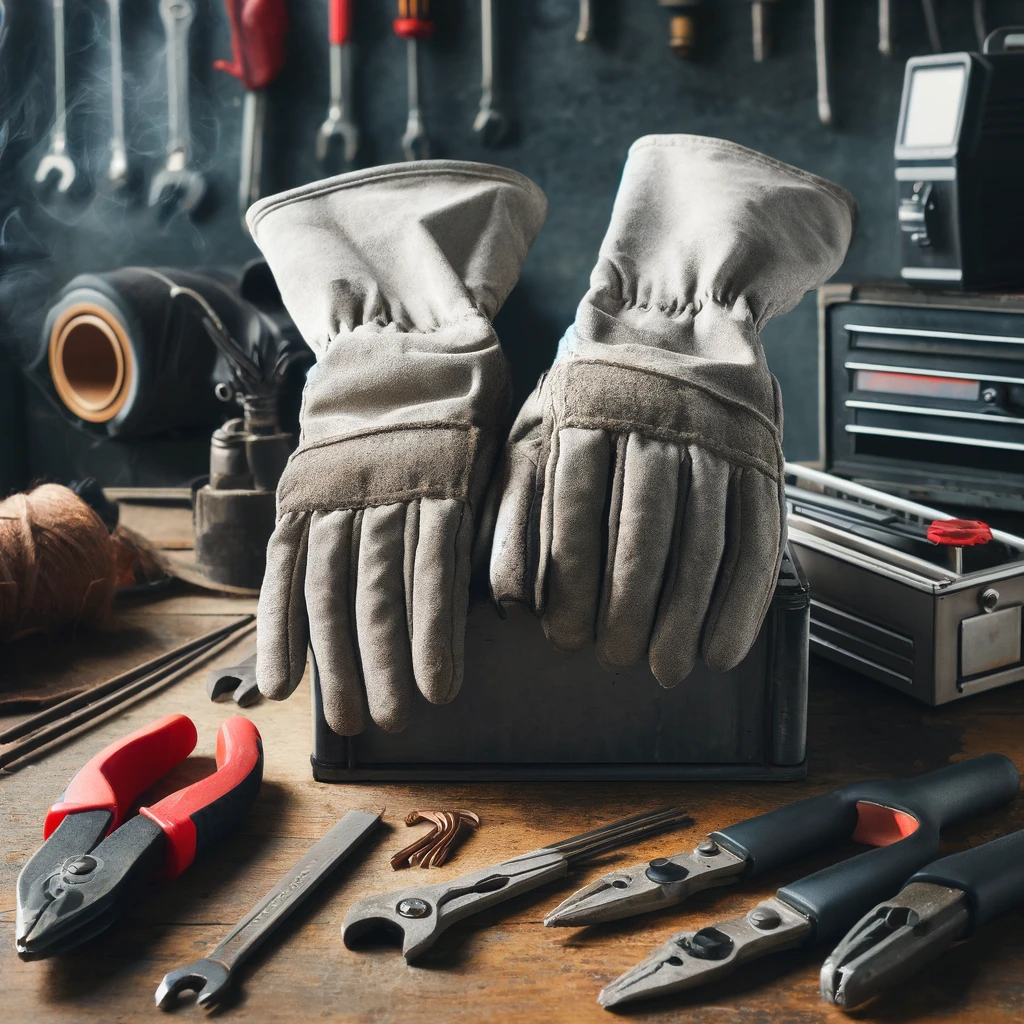
Always keep in mind that different types of welding require different gloves:
For example – TIG welding, thinner gloves offer better dexterity, while MIG and Stick welding gloves are thicker for more protection.
Obviously seek out gloves that are heat-resistant and durable, but the more movement you have for your fingers the better you can handle the toll, often the more you pay for welding gloves the better!
Boots
Something often overlooked whenit comes to safety gear for welding is footware. Due to this and the fact they are very close to the action, it makes them lnerable to injury.
The most ideal resolve to this is steel-toed boots, plus it gives added protection for heavy tools and equipment falling on your toes.
There is such a thing as flame-resistant boots did you know? Pick these over standard ones to ensure your feet are safe from sparks and molten metal.
Also an extra tip:
Choose boots with sturdy, non-slip soles to prevent slipping on potentially hazardous surfaces.
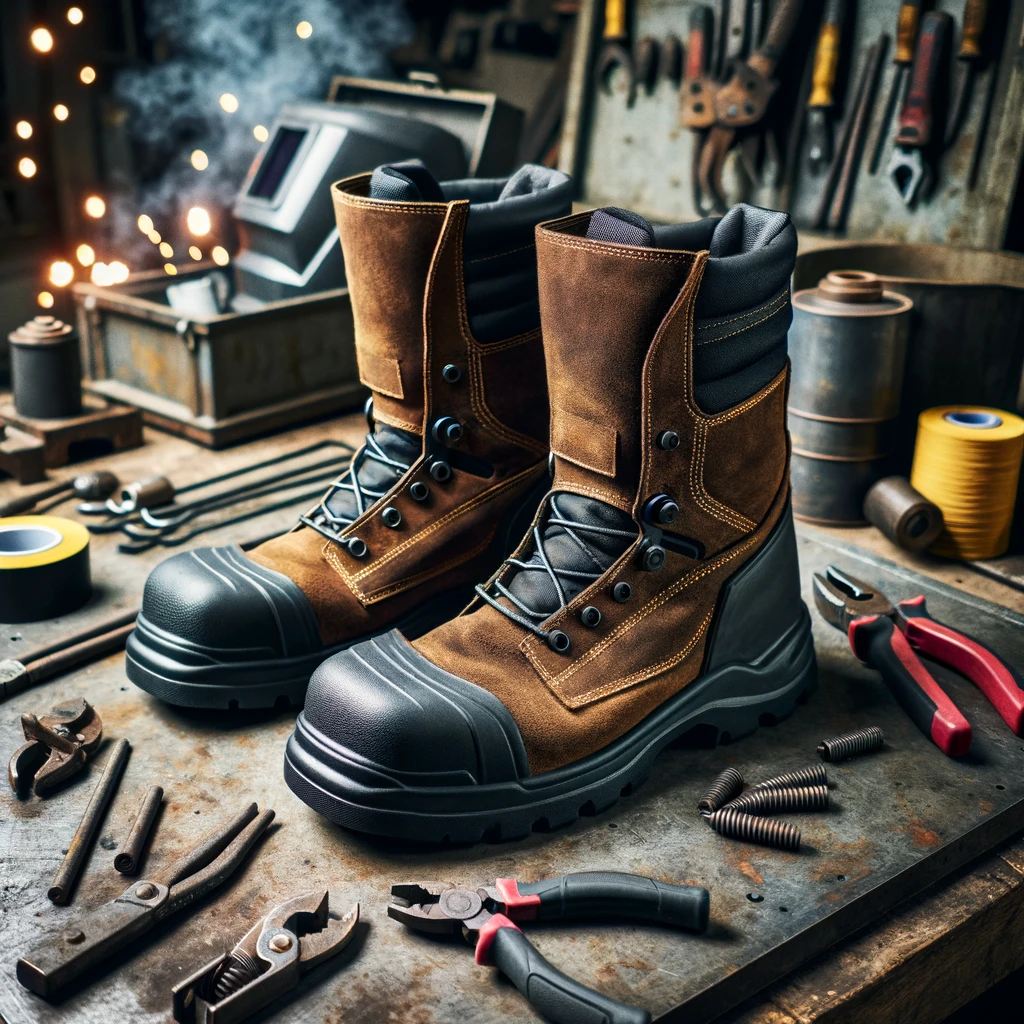
Respiratory Protection
One important factor you need to be aware of wen welding is the fumes. Welding fumes can be hazardous, and prolonged exposure can lead to serious health issues.
Also learn as soon and understand that different metals can omit different fumes.
Depending on what type of welding your doing, it may be advised to use anything from a simple disposable respirator to a full-face respirator. So, Know what you are dealing with.
What does help with this is a workspace which is well-ventilated, and use fume extraction systems when possible.
Respiratory protection is crucial for all welders!
Here is a table with information on welding metals, the fumes they create, and additional helpful notes for welders:
| Metal | Fumes Created | Additional Information |
|---|---|---|
| Carbon Steel | Iron Oxide | Most common welding material, use proper ventilation |
| Stainless Steel | Chromium Oxide, Nickel Oxide | Highly toxic fumes, use respirators and ventilation |
| Tool Steel | Iron Oxide, Chromium Oxide | Wear full protection due to potential high temperatures |
| Pure Aluminum | Aluminum Oxide | Non-toxic but use ventilation for dust particles |
| Aluminum Alloys | Aluminum Oxide | Similar to pure aluminum, ensure good ventilation |
| Pure Copper | Copper Oxide | May cause metal fume fever, use respirators |
| Copper Alloys | Copper Oxide, Zinc Oxide | Zinc fumes can cause metal fume fever, use proper PPE |
| Pure Nickel | Nickel Oxide | Highly toxic, always use proper respirators |
| Nickel Alloys | Nickel Oxide, Chromium Oxide | Toxic fumes, use advanced respiratory protection |
| Pure Titanium | Titanium Oxide | Generally safe but use ventilation to avoid dust |
| Titanium Alloys | Titanium Oxide | Use proper ventilation to avoid oxide buildup |
| Pure Magnesium | Magnesium Oxide | Highly flammable, take extreme caution with sparks |
| Magnesium Alloys | Magnesium Oxide | Similar to pure magnesium, flammable |
| Pure Chromium | Chromium Oxide | Toxic fumes, ensure proper PPE and ventilation |
| Chromium Alloys | Chromium Oxide | Similar to pure chromium, use PPE |
| Gray Cast Iron | Iron Oxide | Common in industrial welding, ensure good ventilation |
| Ductile Cast Iron | Iron Oxide | Similar to gray cast iron, use proper PPE |
| Malleable Cast Iron | Iron Oxide | Wear proper protection to avoid inhaling iron oxide |
| Silicon Bronze | Copper Oxide, Zinc Oxide | Use in brass and bronze welding, ensure proper ventilation |
| Zinc Alloys | Zinc Oxide | Highly toxic, use respirators and ventilation |
| Lead | Lead Oxide | Extremely toxic, avoid inhalation, use proper PPE |
| Cobalt Alloys | Cobalt Oxide, Chromium Oxide | Use proper PPE and ventilation, toxic fumes |
| Tantalum | Tantalum Oxide | Handle with care, ensure proper ventilation |
| Molybdenum | Molybdenum Oxide | High melting point, ensure adequate ventilation |
| Zirconium | Zirconium Oxide | Use respirators, very toxic fumes |
| Beryllium | Beryllium Oxide | Extremely toxic, use advanced respiratory protection |
Best Practices for Welding Safety
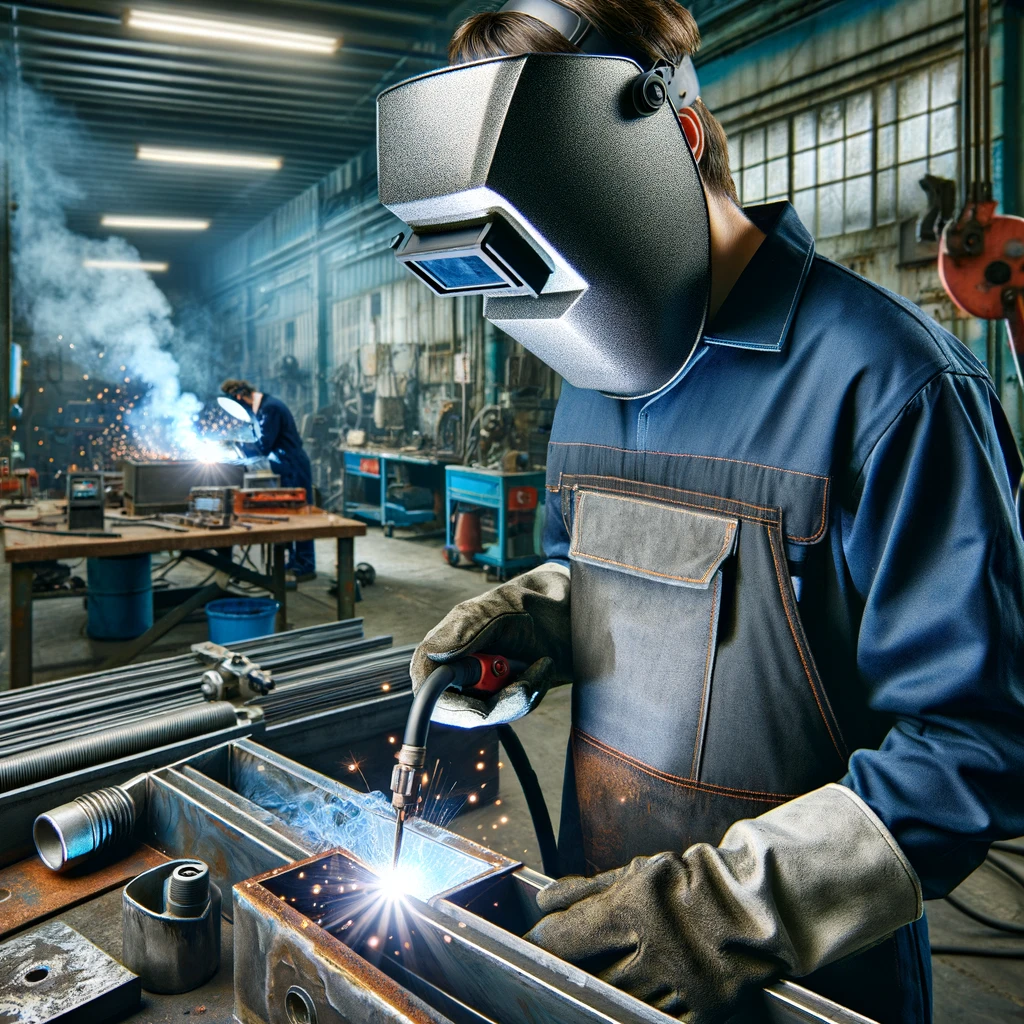
- Pre-Welding Inspection and Preparation
It’s a good habit to get into, before you start welding, always inspect your equipment thoroughly.
Check for any signs of fatigue or damage especially on cables, hoses, and connections.
Ensure your work area is clean and free from flammable materials, a must!
Proper preparation which has been thought through and not used will help minimizes risks and sets you up for a safe and successful welding session. - Safe Handling and Storage of Materials
Always Store welding materials and chemicals properly to prevent accidents. Keep in mind welding creates sparks and the one thing you don’t want is those sparks to meet any chemical, expecially flammable ones!
When it comes to gas cylinders also take great care, securing them upright and away from heat sources. - Regular Maintenance of Equipment
Due to the equipment you are using handling extreme heat, it is wise to always check and regular maintain it.
One reason you may want to do this is to simply prolong the life of the equipment, as its not cheap to buy in the first place, but secondly and more importantly, it may just help avoid you from injury!
Keeping your equipment in good condition ensures it operates safely and effectively.
Emergency Procedures
So lets you we never get to this point, hopefully the information provided above will go towards preventing the following, but just in case, here are some this ad advise on emergency procedures Welders shoudl know about.
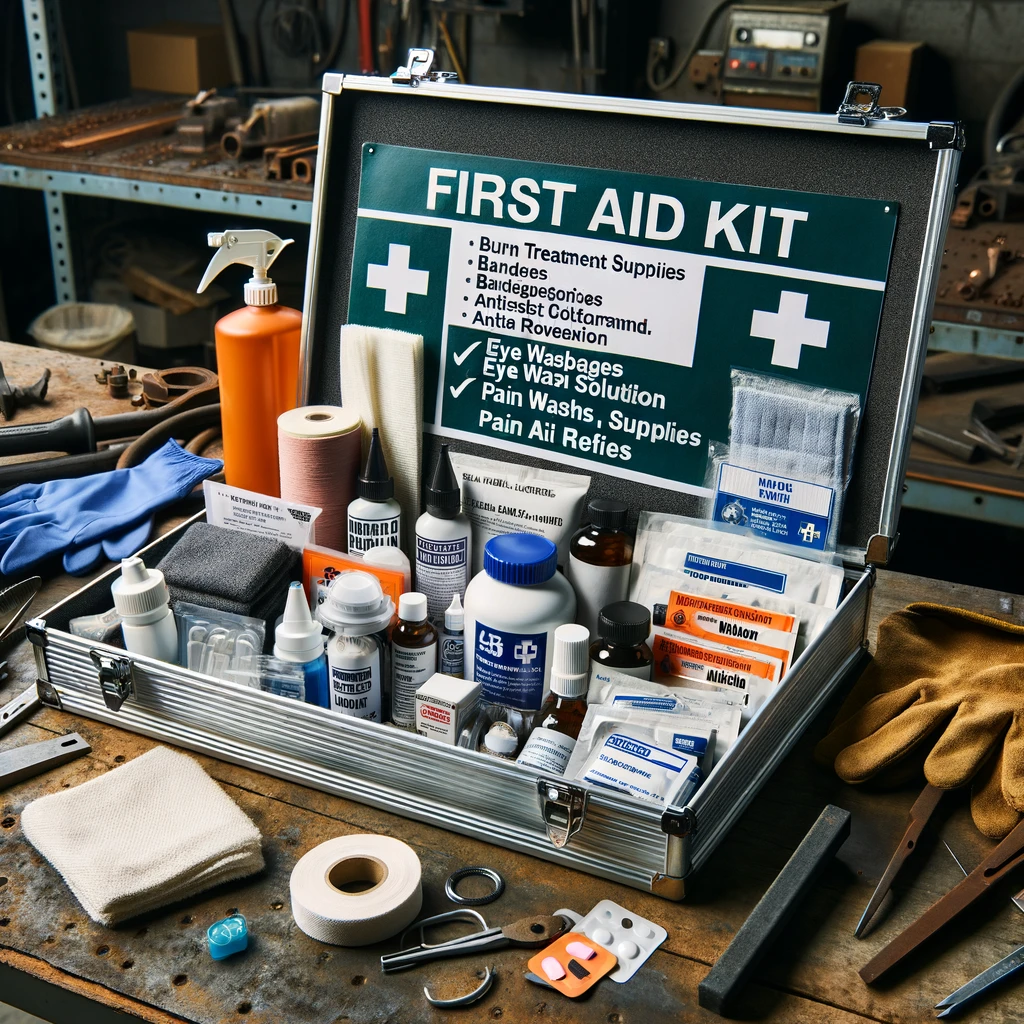
- First Aid for Common Welding Injuries
Without doubt burns are the most common welding injury, knowing basic first aid is key to dealing with this promptly.
Firstly, cool burns with running water and cover them with a clean, dry cloth.
For eye injuries like welder’s flash, seek medical attention immediately.
Always, always always! Keep a well-stocked first aid kit within reach. - Contents of a First Aid Kit Suited for Welders
Burn Treatment Supplies
Burn gel and burn dressings to cool and protect burn injuries. Non-stick sterile pads to cover burns without sticking to the wound. Aloe vera gel to soothe minor burns.
Eye Care Supplies
Eye wash solution to flush out irritants and particles. Eye pads to protect injured eyes. Cold packs to reduce swelling from eye injuries.
Bandages and Dressings
Adhesive bandages in various sizes for small cuts and abrasions. Sterile gauze pads and rolls to cover larger wounds. Adhesive tape to secure dressings.
Antiseptic Supplies
Antiseptic wipes or solution to clean wounds and prevent infection. Antibiotic ointment to apply to cuts and abrasions.
Pain Relief and Medications
Over-the-counter pain relievers like ibuprofen or acetaminophen. Burn relief spray with lidocaine for pain management.
Tools and Miscellaneous Supplies
Scissors for cutting dressings and tape. Tweezers for removing splinters or debris from wounds. Gloves to protect yourself while administering first aid. CPR face shield for emergency resuscitation. A first aid manual for quick reference in emergency situations.
Respiratory Care Supplies
Disposable masks for short-term protection from fumes. A resuscitation mask or barrier device for performing CPR.
Splints and Supports
Finger splints for minor fractures or dislocations. Elastic bandages to support sprains and strains.
Emergency Contact Information
A list of emergency contact numbers, including local emergency services, nearby medical facilities, and the contact information for supervisors and safety officers.
Personal Identification Information
Tip Include any relevant medical information for team members, such as allergies or chronic conditions, to provide to emergency responders if needed. - Steps to Take in Case of Fire
Fires can start quickly in welding environments, as I’m sure you can easily imagine! 🙂
So being prepared is key to dealing with this quickly and effectively.
First, know the location of fire extinguishers and how to use them. Use fire-resistant barriers and keep flammable materials away from the welding area.
Incase the fire gets out of hand, have a clear evacuation plan and ensure all team members are familiar with it.
Continuing Education and Training – Be in the Know
- Importance of Staying Updated with Safety Standards
Welding technology and safety standards are constantly evolving, and rightly so of course.
Staying updated with the latest safety protocols is crucial for minimizing risks, and hugely advised.
As a welder. whatever level you are at, regularly review guidelines from organizations like OSHA and the American Welding Society.
Keeping up with changes ensures you’re always working with the most current safety practices. - Recommended Courses and Certifications
For those who have welding turn into a passion of for those who want to pursue a career in wedding, invest in further education enhances your skills and safety awareness.
Expand on your skills by enrolling in courses on advanced welding techniques and safety management.
Certifications such as the Certified Welding Inspector (CWI) or Certified Welder (CW) can boost your credibility. Specialized training in areas like hazardous materials handling or first aid is also valuable for a welder to be. 🙂 - Benefits of Joining Welding Organizations for Resources and Support
Being part of professional welding organizations provides access to a wealth of resources. If your serious about your welding, than this is the way forward for you.
These groups offer training materials, safety updates, and industry news.
By mingling with other Welding professionals they can provide insights into best practices and new technologies.
Organizations like the American Welding Society offer memberships that include access to webinars, conferences, and publications. Joining these communities helps you stay informed and connected in the welding industry.
